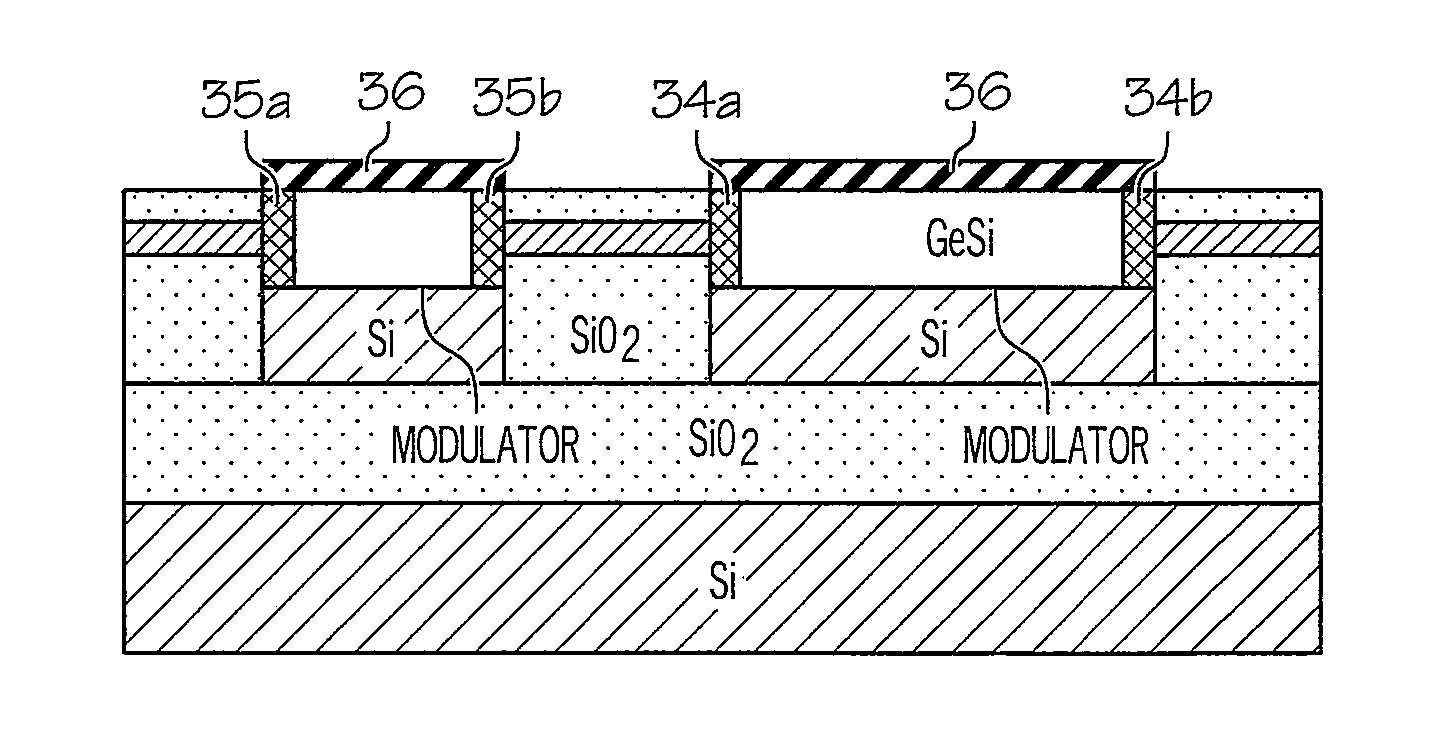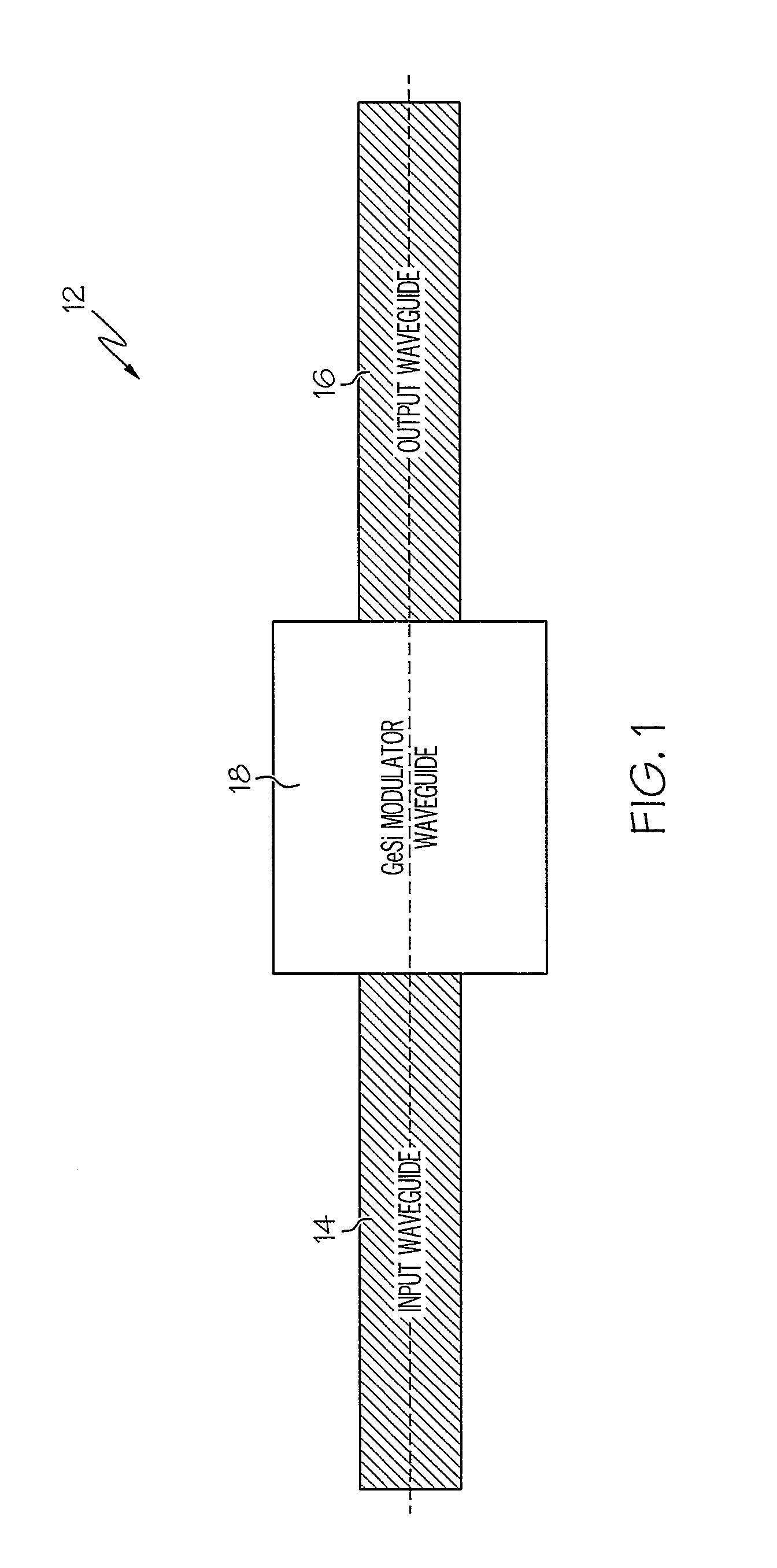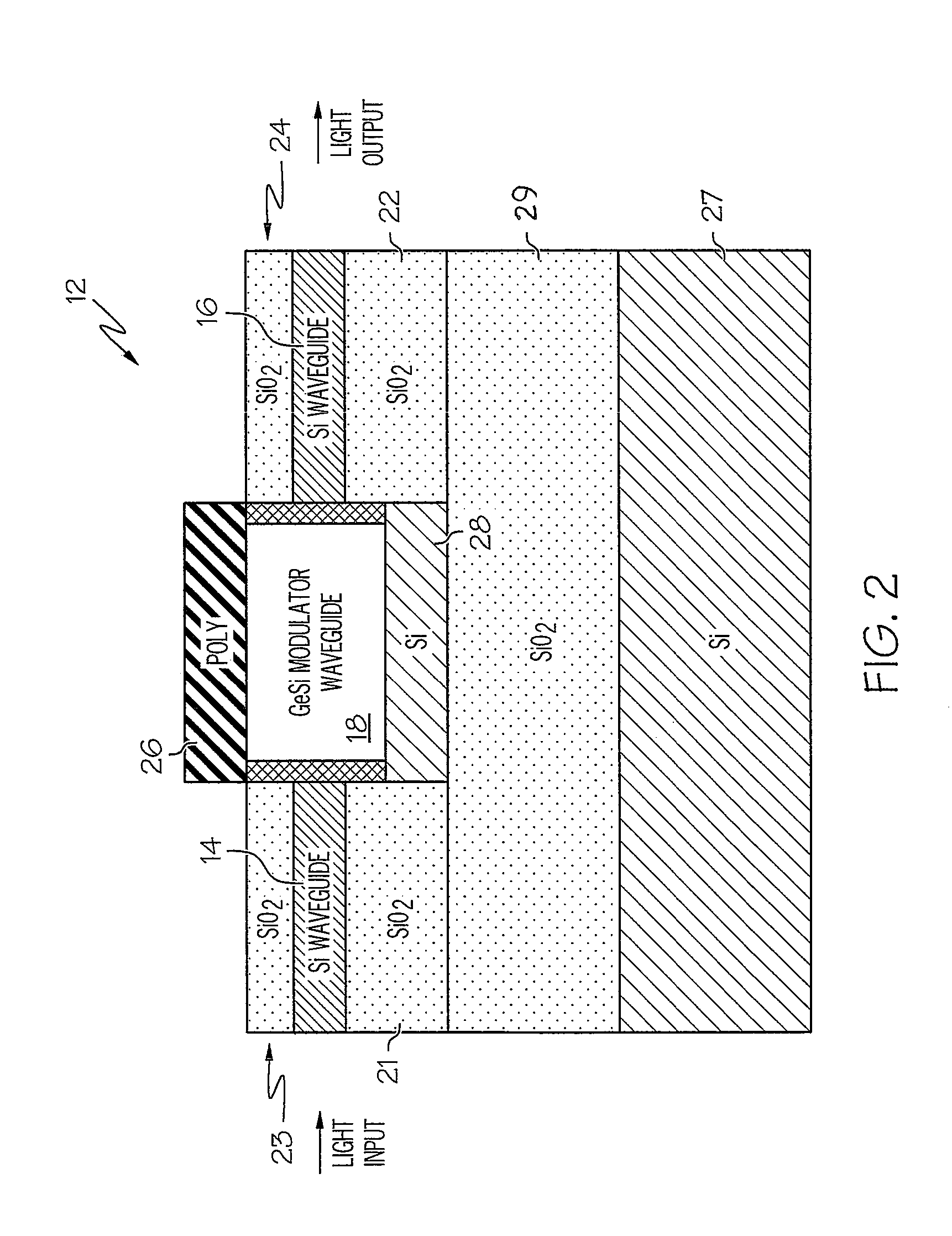Method for Fabricating Butt-Coupled Electro-Absorptive Modulators
a technology of electro-absorptive modulators and butt-coupled electrodes, which is applied in the field of optical modulators, can solve the problems of increasing scattering loss
- Summary
- Abstract
- Description
- Claims
- Application Information
AI Technical Summary
Benefits of technology
Problems solved by technology
Method used
Image
Examples
Embodiment Construction
[0015]Referring now to the drawings and in particular to FIG. 1, there is illustrated a high-level block diagram of a germanium-silicon based electro-absorptive optical modulator. As shown, an optical modulator 12 includes an input waveguide 14, an output waveguide 16, and a modulator waveguide 18. Modulator waveguide 18 provides active light modulation between input waveguide 14 and output waveguide 16. Input waveguide 14 and output waveguide 16 are silicon (Si) waveguides. Modulator waveguide 18 can be made of germanium (Ge) or germanium-silicon (GeSi). The composition of the GeSi material is chosen such that the relative change in the absorption coefficient at a voltage-on state compared to a voltage-off state is maximized around the operating wavelength. The voltage-off state of modulator waveguide structure 18 is operated at a relatively low absorption regime of the GeSi material, and the length of modulator waveguide 18 is less than the order of ˜150 μm so as to keep a low abs...
PUM
| Property | Measurement | Unit |
|---|---|---|
| length | aaaaa | aaaaa |
| thicknesses | aaaaa | aaaaa |
| transmission | aaaaa | aaaaa |
Abstract
Description
Claims
Application Information
 Login to View More
Login to View More - R&D
- Intellectual Property
- Life Sciences
- Materials
- Tech Scout
- Unparalleled Data Quality
- Higher Quality Content
- 60% Fewer Hallucinations
Browse by: Latest US Patents, China's latest patents, Technical Efficacy Thesaurus, Application Domain, Technology Topic, Popular Technical Reports.
© 2025 PatSnap. All rights reserved.Legal|Privacy policy|Modern Slavery Act Transparency Statement|Sitemap|About US| Contact US: help@patsnap.com



